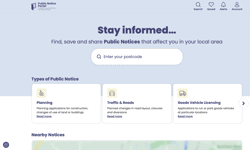
In the legacy media industry as a whole, there is only one subject that really matters, the one that dominates debate – and if it doesn’t, it jolly well should – and that is the concept of digital first, the rest (and especially print) second – or last?
Of course, logically, there is but one answer. Digital first is the only way. Any other direction of travel is backward looking and doomed to failure as the weight of progress and the lessons of history are ignored.
But can anyone be really sure that they know the answer? Or are there just a great number of well-meaning punts being made that have a large dollop of hope as the main ingredient?
Now print, and that exemplified by both newspapers and magazines, appears to be at the forefront of the controversy – and controversy it is – but digital first has ravaged its way through music, film and television, as well as the book sector, in recent years.
And, as I speak from the self interest of much of a lifetime originally in the regional press, and then national magazines, but now in internal communications (where print remains a staple) and customer publications, I do wonder if we are facing our old friend of babies and baths of water.
The laptops and tablets of most teenagers are stuffed full of illegally downloaded films and television shows.
Impact on other industries
Now digital first is not really new. It is a concept that wormed its way through many industries where the war, if war it was, is effectively over.
Banking for instance. You can still get a printed statement – but it’s gradually dying out, and you may meet the occasional cashier. My daughter has certainly never received a statement in her life. I’m not sure she has ever met a cashier, either. And her children will regard printed statements in the same strange way that she looks now at LP records… what were they and why?
In others, the debate carries on. Retail – a bit of both? Though many stores are fighting hard to hang on to footfall. And holidays? The travel agency is all but dead.
But in media – and all media – there is no real conclusion.
Yes Netflix is doing well – but how well do hackers do in getting hold of free movies? Here’s a huge generalisation – but the laptops and tablets of most teenagers (and many of those many years older) are stuffed full of illegally downloaded films and television shows. Why should they bother to pay? Surely a fear for all broadcasters, terrestrial or satellite, state or private.
Have a look at YouTube and similar sites from around the world and it’s quite easy to find full-length movies that aren’t that old. All for free. And underneath the legal side, the file sharers are making hay.
Now the movie and television industries have fought back. Boxed sets offer much in an accessible way. Cinemas are more comfortable than ever before; luxury art house film theatres are springing up – the industry is saying, ‘yes, you might be able to get this for free, but you won’t be able to get it better…’
Digital has almost seen off CDs – but again, will hackers be the final winners? Go back to our old friends on YouTube. There aren’t too many tracks or even whole albums that you can’t find nestling away for free somewhere.
Now film and music are different. Their basic building block is digital. Once manufactured, it is difficult to control where it goes. Of course, it is not a new problem for these sectors. Cassettes, it was said, would kill off music (they didn’t). Video would do the same for film (they didn’t either). But this darn digital stuff is different.
For a start, it takes up no space; second, the quality is somewhat better; and third, the market doesn’t seem to care that it is getting something for free that it knows it should really be paying for.
To be fair, the industry has fought back. There’s money in them thar back catalogues – but will future generations look as fondly on Britney, Pharrell and Kylie as we have on the Beatles, the Stones and David Bowie?
(Having said that, with 382m (and counting) views of Pharrell Williams’ Happy on YouTube, and the odd bob or two of advertising income consequently generated, back catalogues may not be so important to him…)
But overall the argument still remains. Digital has made it far easier for piracy (or theft) to flourish in visual and aural media. But the providers aren’t disappearing without a fight. The Premier League, for example, is banning football fans (or, rather, attempting to ban) from filming and posting clips from its grounds.
But there remains a strong cohort of those happy to pay good money for content. BSkyB in the UK has shown that millions of people are happy to pay large sums of money each month voluntarily on top of their licence fee for almost limitless content.
Netflix is investing in online-only programming; and Fox’s recent failed attempt to buy Time Warner was surely more about bringing together two giants of production than any alleged political desires of Rupert Murdoch. He knows more than most that content remains king. Controlling it so that it can still make a reasonable return remains the issue.
Which brings us nicely to print.
Physical book sales are declining – down some 9 per cent in 2013 in the UK, though they still clocked up a healthy 183.9m copies across the counter with revenue of £1.4bn – so going in to the night somewhat noisily. More than any other branch of the media, despite the loss of bookshops, it seems at ease with a digital future, especially with the rise of the tablet; consumers are happy to pay, digitally or physically. Perhaps books are the hope.
Cover price income and print advertising yields, despite falling steadily, continue to easily trump online revenues.
Impact on newspapers and magazines
And so to news where it’s not so clear cut because many have cut out the middle man hacker and have given the stuff away in the first place, which muddles it all a little.
National newspapers are split on the business model. Some, notably The Times, demand payments for everything (I refuse to give value to the word paywall – a digital term that seems only to infect the news trade and fails to pollute virtually all other digital enterprises), while The Guardian and the Daily Mail have been passionate about free access.
In these three cases all have invested (and continue to invest, despite some job losses) in quality, and quantity, editorial. They give good reasons to visit their sites and to spend valuable time with them, a commodity generally valued more by many people than almost everything else they possess.
In both business genres, news is put up as it happens, while features tend to be held back to at least when the paper is published in the small hours. Of course digital first doesn’t really need to concern The Times that much – as it receives a payment come what may – but it does have to consider the idea of edition – and that people still make a date to read heftier items, whether it’s newsprint or digital.
Of course nationals have the living equivalent of Banquo’s ghost – the BBC – to deal with. Its website, and especially the sports sections within, remain the turn-to options for breaking news – and its non-advertising presence will always muddy the waters. There is no clear answer here.
Some magazines are bold. Private Eye is the best example, offering virtually nothing online and maintaining a healthy ABC that has been consistently above 200,000 for many years. There will be no digital first in Lord Gnome’s garden for a long time yet.
Empire, the movie magazine, has led the way in mixing and matching. It puts its film reviews up first, but keep back many in-depth features, in to which a great deal of journalistic resource is pumped – for the magazine. They find their way online eventually but not before readers have either had the magazine for a few weeks or invested in an app edition. Although its circulation has dipped this past year, it is still selling 145,000, including apps, monthly. Not bad at all and beating the competition comfortably.
And now regional newspapers are establishing explicitly digital first newsrooms and policies – notably Trinity Mirror and Gannett in the UK and Digital First Media in the US.
Their advocates’ passion for the concept cannot be doubted – huge amounts of work and research has gone in to their development – but can they be sure that the cash will follow their ideas – will digital first bring in enough eyes to generate a winning income?
On one hand, it’s a tough argument to make, on the other, it’s a tough argument not to make.
Cover price income and print advertising yields, despite falling steadily, continue to easily trump online revenues. Don’t strangle the golden goose. But turn the argument slightly on its head. Cover price income and print advertising yields are falling, and will not always trump online revenues; the digital stream is the future and must be given all the help it needs.
But what about the readers? They’re a fragmented bunch these days. Do they really count these days? Does it matter what they read, when they read it or why they read it? It should do, but I suspect that it doesn’t. The stats show that digital first isn’t for all. Plenty of readers still like print and don't mind if it's more than a nanosecond late. And they tend to respond better to advertisements.
The impression is that some legacy regional and local media businesses are more interested in the bizarre story that goes viral rather than a consistent service of reports of genuine and lasting relevance to the core audience. That's why I ask, what about the readers. There's not a universal duty of care, I would argue.
In my own current field of internal communications, staff engagement and customer-facing magazines, the reader must come first, or why are we doing what we are doing?
We know there is a balance to be had between those with smartphones and desks and those who spend their time on shop floors or driving for their living. We are producing more virtual publications, but we know, and our clients know too, that digital first (or only) isn’t for all.
Surely the question is simply one of the quality of content. If it’s good enough, it will be read in some form. And if it is read, some funding – sponsorship, advertising, subscription, straight payment – may find its way through to underwrite it.
So digital first, in that respect, is something of a red herring. In the end, as always, it is about the cash.
Many of the UK nationals and magazines continue to produce exceptional quality. But will legacy regional and local news organisations provide good enough material to drag the cash along behind it. Most are giving it all away free online while some, like The Tindle Group, demand money for page turners. It is not the best start, arguably, for the majority.
What it means ultimately is that customer (reader / viewer / listener) first should lead more than anything else. And not just about the quantity and the timing of the product, but mainly about the quality. Get it wrong and digital first may be the final piece in a coffin-shaped jigsaw nail – but get it right and there may, just, be some long-term grounds for optimism.
The digital stream is the future and must be given all the help it needs.










